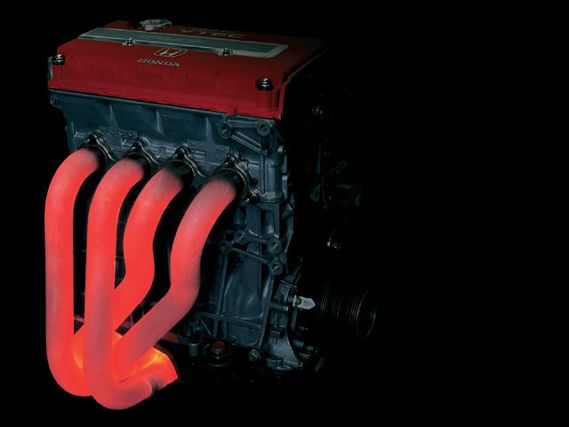 | Cooling Systems - Drop It Like It's Hot
| Cooling Systems - Drop It Like It's Hot
To keep your car from get ting too hot under the collar an engine cooling system is muy importante. Many car newbies are so excited about pumping up the horsepower on their rides they neglect to think about the consequences, such as increased engine heat. Besides melting the plastic fans desperately trying to keep your engine cool, too much heat will also create or exacerbate other problems that were at the thershold during cooler months.
Heat is a byproduct of horsepower, and the more horsepower you make the more heat your engine will generate (that's a positive correlation for you nerds out there.) Too much heat can kill an engine. Keeping things cool under the hood can not only increase the power output of your engine but also increase your engine's life span.
When it comes to cooling your engine, there are several ways to lower underhood temperatures. One way is to install a larger core radiator. Fluidyne, Koyo and PWR are just a few companies out there that offer aftermarket, large-core radiators for hundreds of sport compact applications. The larger core means larger capacity, increasing the volume of the cooling system allows the radiator more time to remove the heat from the coolant before it recirculates through the coolant passages.
There are also several coolant additives available that you can pour into the radiator to reduce operating temperatures. Design Engineering Radiator Relief states their additive helps transfer heat more efficiently through the radiator. It is also compatible with water and all anti-freeze mixtures and there is no need to change the ratio, just add it in. Red Line and Royal Purple also offers similar cooling system additives.
In addition, thermal wraps like those from Thermo Tec are a great way to control heat. The biggest culprit of underhood temperatures is the exhaust system. On turbocharged vehicles heat can be a killer. Wrapping the header(s), turbo manifold and/or downpipe will reduce the temperature under the hood substantially.
Besides thermal wraps, ceramic coating is another alternative for controlling heat. HPC High Performance Coatings, Swain Tech Coatings and Calico Coatings are just a couple of companies that offers exhaust and header coatings capable of withstanding temperatures up to and over 2,000-degrees Fahrenheit. The ceramic coating helps retain the heat within the exhaust system reducing temperatures throughout the engine bay, especially to components near the exhaust system.
The products mentioned above help retain heat but there are also products that help reflect it. Heat shield sleeves are a great way to protect vital engine components from burning. Oil feed and oil drain tubes from the turbocharger are prone to heat saturation. On a turbocharger center housing that relies solely on engine oil for lubrication and cooling, injecting it with already heat-saturated oil can result in damaging the bearing and seals.
The turbocharger drain tube is another area that can benefit from a heat shield sleeve. The sleeve will lessen the chances of the tube hardening and possibly cracking. The sleeve acts as a barrier by reflecting the heat from the downpipe or manifold away from the tube. Wiring harnesses and spark plug wires close to the exhaust system can also benefit from a heat shield sleeve.
So what did we learn today kids? Taking the proper steps when it comes to cooling high-performance engines can play a key role in the longevity of your boosted-up powerplant. Remember in the summer you have to beat the heat before you can seal the deal.
